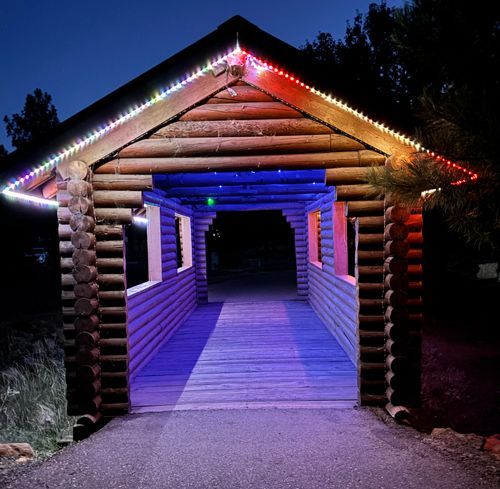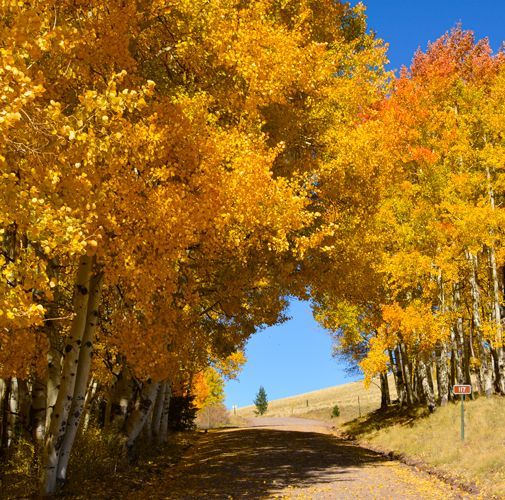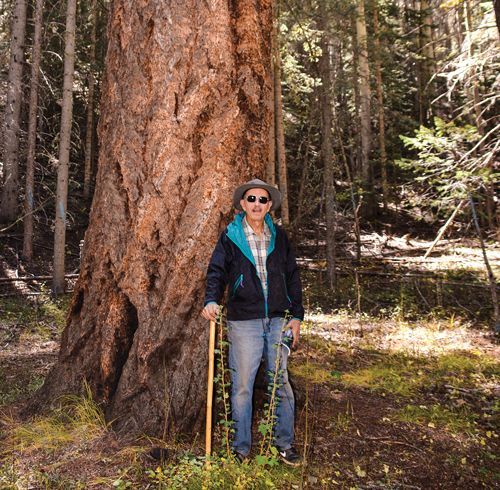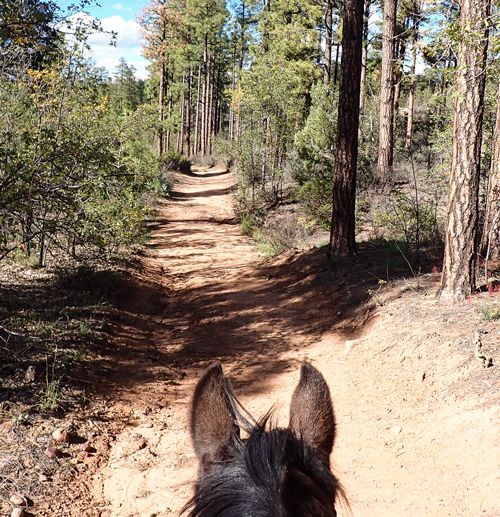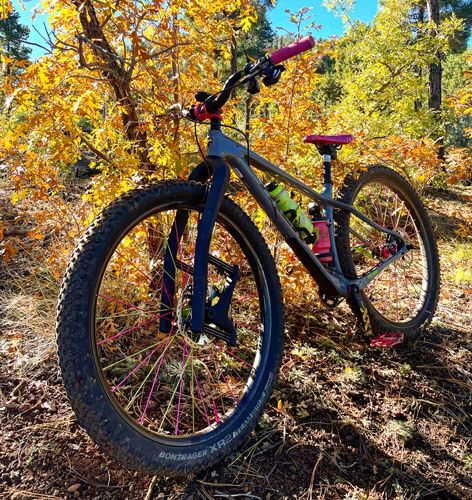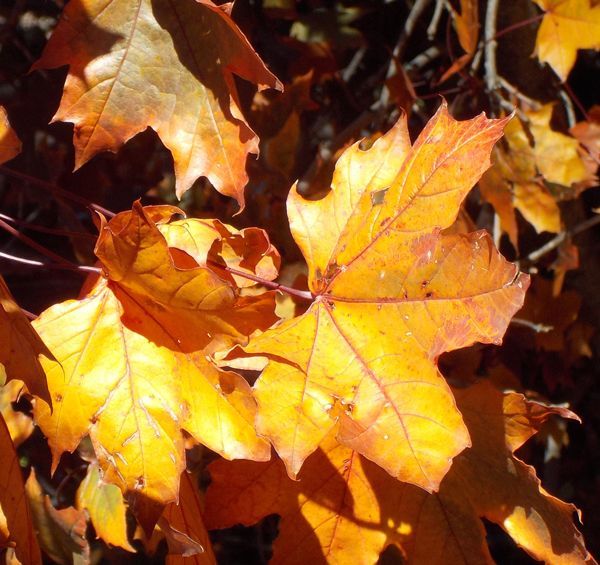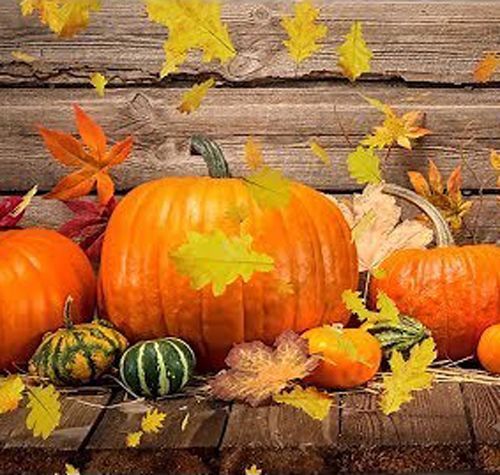Get outside and give yourself a chance to be a part of something larger, something timeless...
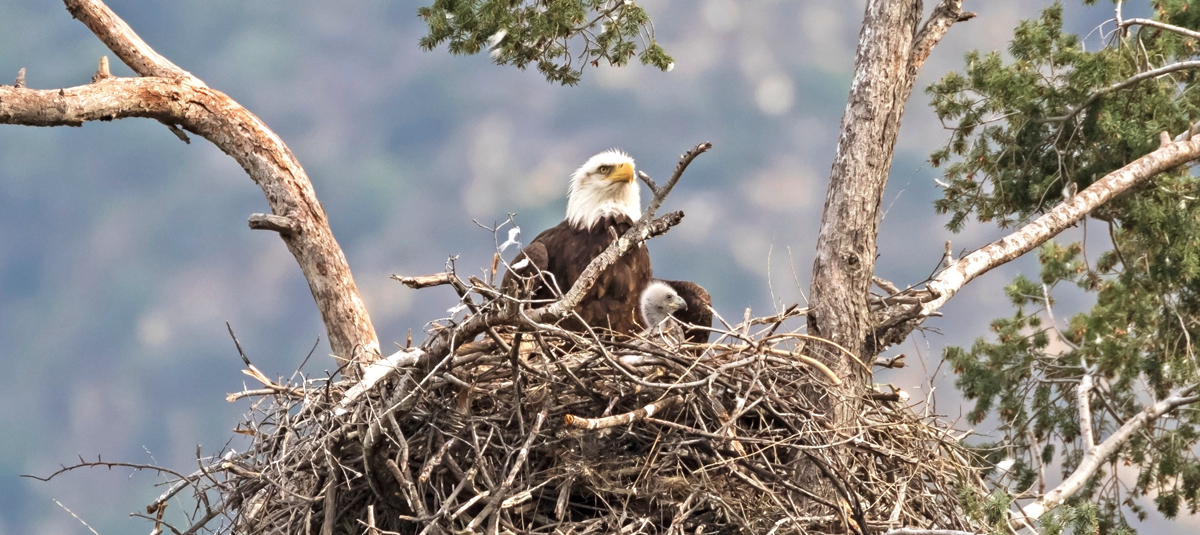
Photos & article
By Carol Godwin, Cycle Mania
One of the most satisfying things you can do for yourself in times of trouble is to get outside and give yourself a chance to be a part of something larger, something timeless, and something that doesn’t involve your participation or input in continuing to exist. Nature is a powerful force and spring hammers that message home with crystalline clarity. Trees, that a week or two ago were just brown “lifeless” twigs suddenly have full-on leaves and flowering shrubs are buzzing with bees. How in the world do the dormant cells “know” when it’s safe to begin dividing to create leaves that won’t be in danger of freezing in a late storm? Is it temperature? Is it day length? Is it the patterns of winds? It’s probably a combination of all the above, but it is surely a miracle of evolution.
Hummingbirds suddenly arrive just as flowers are beginning to open and bird migration maps track the movement of birds moving from South to North America as the seasons switch places. Coyotes yipping off in the distance are busy collecting food to feed their young; mating season timed perfectly to have pups born just when nature is revitalizing itself and food is abundant. Rabbits are busy creating grass nests and caring for kits, some of whom will eventually feed the young coyotes, and recently arrived birds are establishing territories, building nests and hatching young in freshly budded trees just as the insects necessary to feed newly pipped chicks begin to move and reproduce.
Mosses that lay dormant and brown suddenly green up with moisture and, bam! It’s spring. There’s a pair of red-tailed hawks on the knoll I frequent, and I’ve been looking for their nest that is strategically placed somewhere in a snag high on the northern slope, but year after year, I just cannot find exactly where it is as they circle overhead screeching out their irritation and territorial dominance as we pass by.
Like many people this spring, I’ve been faithfully watching several of the live Bald Eagle cams set up across the US. There’s America’s favorite couple, Shadow and Jacque in Big Bear CA, who bonded in 2018 and, as a long-term couple, laid over 14 eggs, with five successfully hatching and fledging over the years. This year they hatched three eggs with two surviving to fledging age. They are the ultimate examples of evolutionary dedication, empathy and parenting.
It’s a big job to care for eaglets: There’s the 35 days of brooding the eggs and keeping them warm in freezing temperatures, periodic snowstorms and fierce treetop winds. There’s the keeping the tiny eaglets warm after hatching while feeding them multiple times a day, collecting food in the form of fish and ducks, maintaining and widening the nest and as the eaglets mature, adding large perching practice sticks as the eaglets prepare to fledge, and encouraging them to exercise their wings to prepare for that first leap out of the nest, coming up soon.
Jacque and Shadow are experienced parents who take turns brooding and feeding and have been great providers, successfully adding two new eaglets to the ecosystem. On the other hand, there’s Mrs. and Mr. T. in Trempealeau, WI. Mr. T is a two-timing thief who abandoned his first mate after she laid their egg. Mrs. T has had to take on the entire responsibility of brooding and feeding their chick while he attached himself to a younger female across the lake. His input into the family is to steal the fish that Mrs T. brings to the chick, making her efforts to successfully raise it twice as hard. Incredibly, he takes the stolen fish to his second nest to feed those chicks, posing as a responsible father. Having to act as a single parent causes Mrs. T to have to repeatedly leave the chick unguarded while she is off to work getting food to feed the hatchling, only to have her unfaithful mate eventually come steal entire fish from his neglected single chick. So far, the single chick is thriving and we are all rooting for this determined mother.
Why are we so enamored with these families? How are we able to interpret the actions of a species so different and yet so similar to our own? I think it is because of the trait of empathy. Empathy is the ability to understand and share the feelings of another living organism. Studies have shown that people who have a high affinity for animals and nature often show high levels of empathy and compassion. Those who do not feel empathy, see big birds flapping, awkward ugly babies and maybe fun targets to shoot at. And, those without empathy see our forested areas as a means to an end rather than a fulfilling escape filled with wonder. Those of us who have empathetic traits felt the pain when one of Shadow and Jacque’s chicks perished in a big snowstorm.
Jacque spent days buried up to her neck in snow, trying to keep all the babies protected while Shadow provided food for all of them, but despite their best efforts, one chick wiggled out from under Jacque’s protective warmth and died. Both Shadow and Jacque mourned over the dead chick in the nest for a few days and then Jacque took it away some place to dispose of it; she did not just toss it over the edge like they normally do with old fish and duck carcasses. We feel admiration in seeing the young eaglets stretch their wings and practice jumping and flapping, and we will certainly feel a mother’s loss and pride as they eventually fly off to make their own ways in the world, just a few months after arriving in the world as tiny helpless creatures encased in a thin eggshell. We also feel anger at the two-timing thieving Mr. T and the admiration for the hard work of Mrs. T in raising a chick as a single mother, rooting daily for her success.
In several incidents with eagles this year, severe winds knocked generations-old nests out of trees and eaglets were killed in the falls. A heartbreaking loss for us as humans empathizing, but a part of life for the eagles who will try again next year, learning something about nest building and maintenance in the process. In one case, the main part of the nest survived the fall, with two young eaglets clinging to it and was found floating in a nearby swampy area. Rescuers waded into the swamp and collected the wet eaglets to raise and release when they mature in a few more weeks.
Donations of fresh trout flooded into the rescue to help save these eaglets. Some people criticized the rescue, saying “Let nature take its course”, but is there any harm in empathizing with these fellow life travelers and helping them on their way? I say no. Allow empathy a part in your life, help where we can, let ourselves into lives other than our own and be a part of the tableau of life around us rather than just focusing on what only makes us more powerful in our own eyes.
“Humans are amazing creatures, built on an evolutionary legacy of empathy and compassion for one another. Encouraging, rather than discouraging, empathy and care for one another can only lead to the evolution of future humans that will be much more successful than we are able to be now.” — Carol Godwin
Empathy allows many of us to “walk in the shoes” of other living things, ranging from nodding flowers broken by a careless footstep to the helplessness of a baby bunny caught by a cat, to the specter of endangered species disappearing because of loss of protection and to families torn apart by political policy makers. We have been cautioned that empathy is a flaw in the human condition, is “the fundamental weakness of Western civilization” (Musk 2025) and should be squashed so we can be powerful and successful as a nation. I disagree wholeheartedly and feel that empathy is one of the core traits that makes us uniquely successful as humans and one trait that makes our lives worthwhile and fulfilling.
As an avid hiker and biker, I often wander into philosophical pondering as I move through the woods with the dogs. Does a tree have empathy for its saplings, struggling to grow in its shade? Does the caterpillar feel guilty for eating the new leaves off a bush? Not possible, this is an example of the survival of the fittest and there is no room for empathy in plants, insects or many reptiles. Does the coyote feel empathy as it chases and kills a mother rabbit, leaving kits to starve? Does an eagle feel empathy for snatching a hen away from helpless ducklings? Of course not. The rabbit/duck is food and a coyote/eagle, which stopped to consider the ethical ramifications of removing the mother from its babies, would starve and not pass on its genes to the next generation. But, both animals felt empathy for their hungry young and can do whatever it takes to raise those young successfully.
Does an elk cow which has a calf killed by a mountain lion feel loss? Of course, but does the rest of the herd feel empathy towards that cow and treat her with a different level of compassion afterwards? I think not. Life goes on, and there is food to be found in the next meadow. Does a wolf pack feel empathy for a wounded or elderly member? It has been shown that they do care for those weaker members of the pack by protecting them and bringing back food for them, just as they do for their young.
Empathy and compassion build and maintain strong communities, so that future generations inherit these qualities. Empathy was likely a tremendous evolutionary advantage for those animals that require a parent’s care for an extended amount of time. Fish and reptiles which do not provide extended care for offspring have not been shown to show empathy. Parents who could expect an offspring’s needs were better able to care for that offspring and the trait of intra-species empathy was passed on and magnified over time.
Studies show that most mammals and birds experience empathy, suggesting that successful offspring care is related to empathy and, consequently, community success. Great apes, dolphins, elephants, felines and canids are the most prominent animals that show empathy and are all species that require extended care for offspring. Interestingly, the most common domesticated animals are those that share the trait of empathy with us and can form close bonds with humans.
The Human-dog bond is unique in evolution because it is the only example of co-evolution between two large dominant predators, each willing to give up a little of that dominance for the advantage of working together. Dogs help give my life meaning and definitely add to the outdoor adventure as I experience the world at least a little through their interactions with nature. They open our eyes to things that are present there that we may otherwise never have noticed and give us unwavering and enthusiastic companionship, no matter what we are doing.
Go take a walk, look around you, feel the success of an oak tree budding out perfect leaves this spring, listen to the enthusiasm of birds singing to establish their territories, think about the perfect timing between flowers and hummingbirds, hatchlings and the arrival of insects feeding on green leaves. Watch the intent focus of an osprey anticipating the movement of a fish in order to execute a perfect dive and a fishy meal to bring back to its fledglings in the nearby nest. Listen to a pack of coyotes communicating across a canyon about a fresh kill and watch your dogs explore spring. Think about how and why these things evolved to coincide so perfectly. Think about how you are a tiny part of all this grandeur and why it is important that you allow yourself to go into the world with your empathetic senses intact. Happy spring!
Watch Jacque and Shadow here: https://www.youtube.com/@FOBBVCAM

